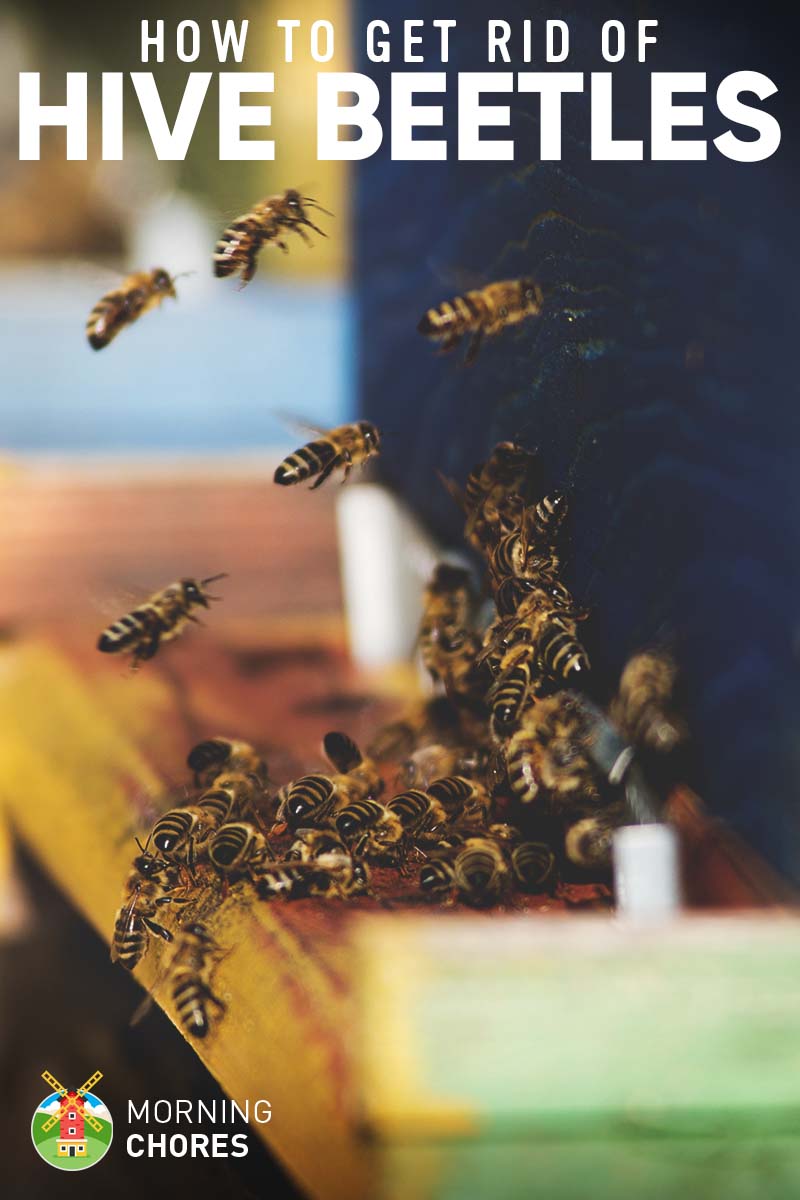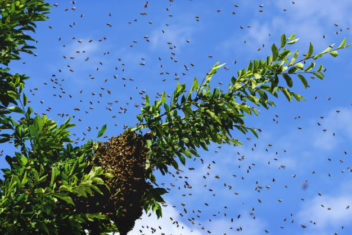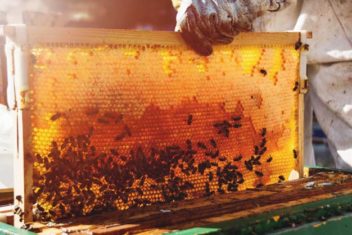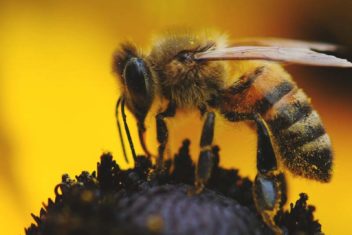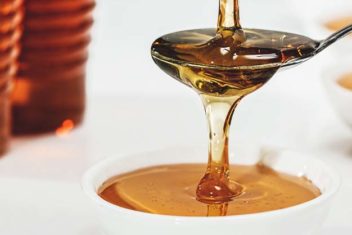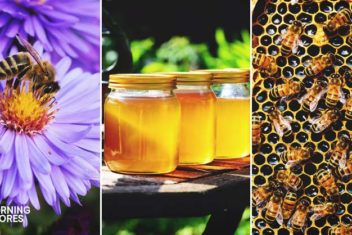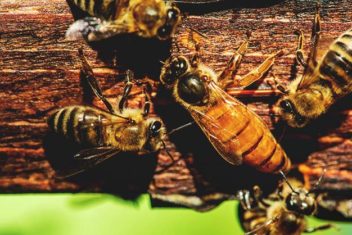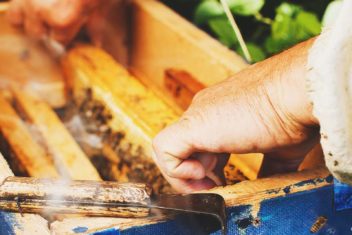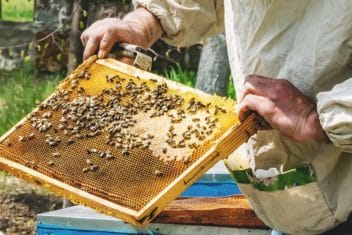Bees are such a valuable part of the landscape – and definitely worth investing in if you don’t have them already. However, they aren’t the easiest creatures to have around and there are certain threats, like hive beetles, that can make owning an apiary even more challenging than it already is.
Hive beetles, if not controlled, can rapidly destroy your hives in the blink of an eye.
Luckily, there are several techniques that can not only help you to prevent hive beetles but get populations under control. Your bees will be happy, healthy, and productive once you implement these simple techniques.
What Are Hive Beetles?
The hive beetle is a tiny pest that originated in sub-Saharan Africa. Unfortunately, it is now found just about all over the world, including most places in North America.
Although it is small, it is mighty, working rapidly to destroy an entire beehive. The hive beetle can not only destroy honeycomb, stored honey, and pollen, but it can also target your bee larvae, too.
An adult hive beetle is usually black or dark brown in color and only about five millimeters in length. Hive beetles have long lifespans for insects, living up to six months in most cases. They also breed rapidly – during the warmer months, hive beetles can produce up to five generations in a single beehive.
In an infested hive, hive beetles can be found just about anywhere. Honeybees sometimes chase these pests to the back of the hive or into various crevices. They’ll also try to seal them into cracks. This isn’t effective, though, since female hive beetles then lay their eggs in the cracks where the bees can’t get to them.
Each egg takes only about three days to hatch and matures in just two weeks.
Why Are Hive Beetles a Problem?
Before you can truly understand the best ways to get rid of hive beetles, you need to understand the real problems that these pests can cause. As a beekeeper who has lost several hives to hive beetles; I can tell you firsthand how destructive these pests can be.
1. They Eat Your Bee Brood
Hive beetles will settle right into your hives, making themselves at home. Almost immediately, they will start laying eggs.
These pests take over the hive quickly, and once they do, they, of course, need food to keep them going. Hive beetles are quite fond of bee broods. As you might expect, this is problematic – if the hive beetles eat all the brood, your hive will be unable to reproduce.
It can also weaken your beehive overall, causing the queen to leave the hive. She may take the rest of the bees with her, too, which can cause a swarm that will result in you losing your bees for good.
2. Honey Destruction
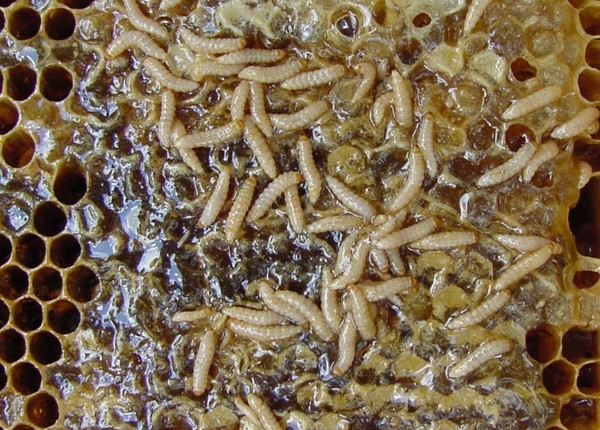
While it would be nice to raise bees simply for the fun of it or to do good for the environment – see our post on saving the bees – the reality is that most people (myself included) raise bees to get something out of it – the honey.
Unfortunately, hive beetles like honey just as much as we do. Adult hive beetles as well as their larvae, enjoy munching on honeycomb. Unlike some other bee pests, such as wax moths, hive beetles don’t totally destroy the honey. They do, however, eat all of the honey, which robs the bees of their food source.
Not only that, but hive beetles are known for defecating inside the hive. This causes the honey to ferment, rendering it useless for your harvest. It also gives it an awful odor.
Your bees work way too hard for all of that honey to be wasted. Not only can a hive beetle infestation ruin the honey harvest for you, but it can also cause your bees to starve.
3. Stresses the Hive
Think of it this way. Somebody comes to stay at your house, refuses to leave, eats all your food, and even poops in your food supply! Pretty disgusting right? It’s probably not going to help your stress levels, either.
Bees are tough creatures, and they work hard. At any time of the day, bees are out foraging for food, feeding drones, laying eggs, caring for a queen, building comb, and more. They have enough to worry about as it is.
Throw in a hive beetle infestation, and your bees are going to become seriously stressed. When a hive is stressed, it naturally weakens as the hive’s resources are stretched thin. A hive beetle infestation can cause the total collapse of your hive. You will need to do everything you can to help protect your bees from these intruders.
How to Get Rid of and Prevent a Hive Beetle Infestation
1. Practice Good Apiary Management
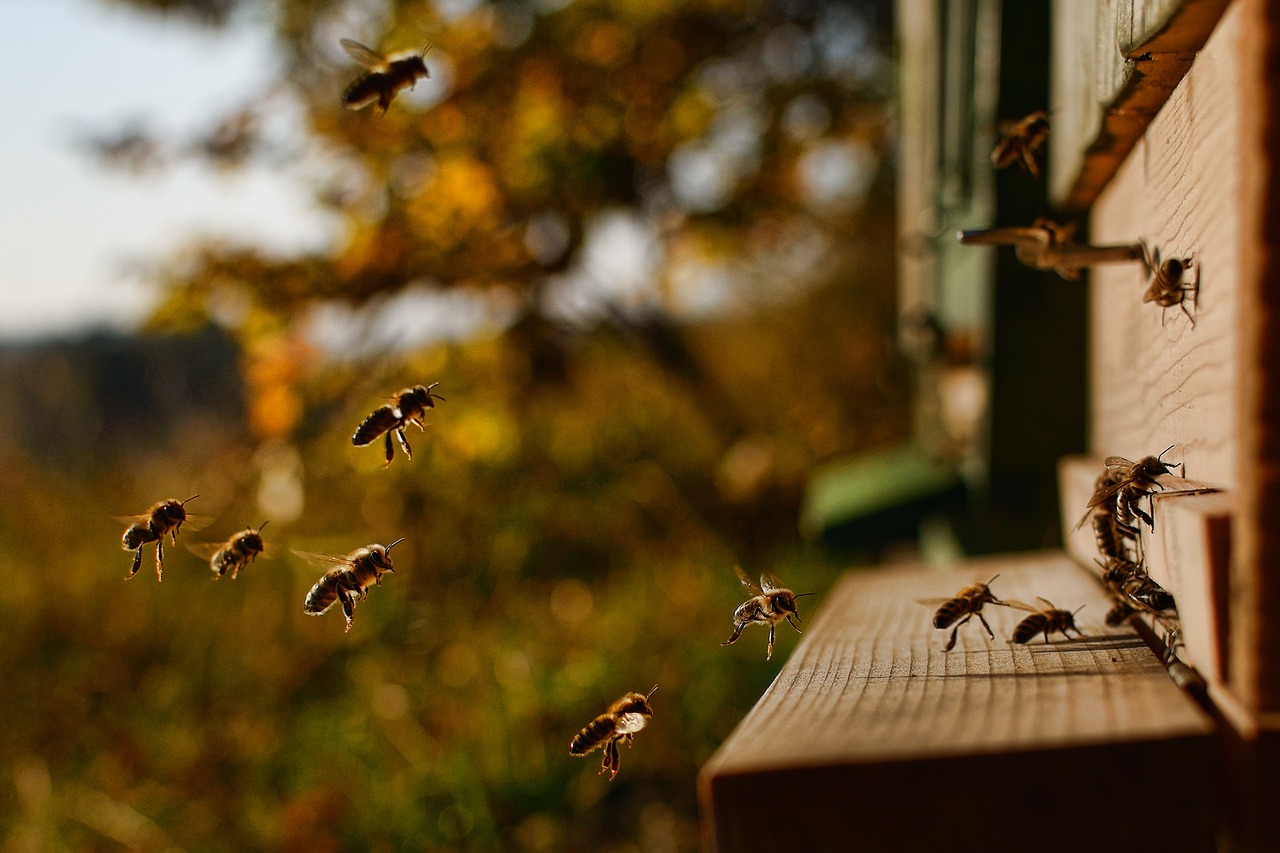
The best thing you can do to prevent an infestation of hive beetles – or any kind of bee pest – is to practice good preventive techniques as a beekeeper. Keep your colonies strong and healthy, doing everything you can to reduce stress. Propagate bee stocks that have genetic characteristics that are resistant to disease and pests.
When you combine colonies or exchange combs, be careful. You can easily introduce eggs from outside colonies. Keep your apiary clean and sanitary and avoid things like tossing comb onto the ground – this can attract all kinds of pests.
Remove frames and hives that are not in good condition. Hive bodies that are rotten, cracked, warped, or damaged in any way offer more hiding spots for beetles, making them harder to detect.
Finally, when you remove honey from your colony, extract it within two days. Wax cappings are a favorite source of food for beetles and need to be processed quickly.
2. Remove Honey Supers
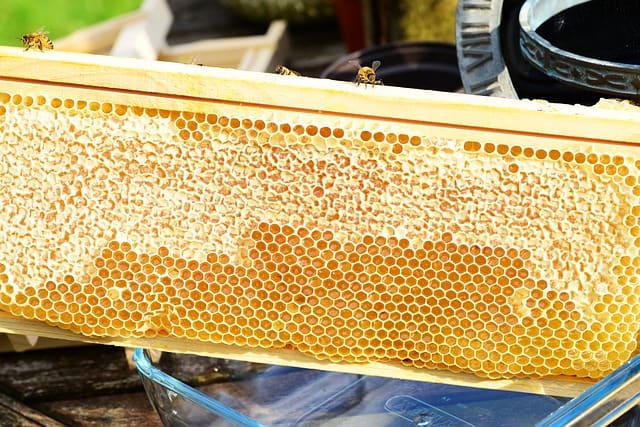
If you have an infested hive, remove unnecessary honey supers. This will lessen the territory that needs to be patrolled, making it easier for your bees to respond to the threat. If the supers aren’t ready for extraction yet, you can move them to stronger colonies.
3. Expose the Hives to More Sunlight
One of the best ways to prevent a hive beetle infestation is to consider the location of your hives. Ideally, you should place your hives in full sunlight – a bit of afternoon shade is ideal. Keeping your hives in completely shady locations is not a great idea.
Hive beetles, quite simply, don’t like the sun. They get too hot. Bees, on the other hand, won’t necessarily care (although you’ll want to avoid working them during the heat of the day, as they are sometimes more agitated when they are warm).
Don’t go out and start moving your hives around if you’re panicking over a hive beetle infestation. Too much movement can stress your bees unnecessarily during this time of already-increased anxiety. Instead, nip the hive beetle problem in the bud early on by placing your hives in the proper location.
4. Cover the Ground
Make sure the ground is covered in the area beneath the hive stands. This serves multiple purposes. Not only will it make it more difficult for hive beetle larvae to pupate and return to your hive, but it will also make it more challenging for other predators to get into the hive.
5. Purchase a Mechanical Trap

There are all kinds of mechanical traps that you can purchase or make yourself. These work by trapping beetles in mineral or vegetable oil. The traps have small openings that let beetles enter but keep honey bees out.
6. Make a Bait
Small hive beetles tend to congregate in darker areas of the beehive. If you place a screened bottom board in the hive, you can force the beetles to move upwards into the beehive with a boat (in the same way that a mechanical trap would work, as mentioned above).
The bait will confuse the hive beetles, as they will assume it is honey. You can purchase bait from various manufacturers, but you can also make your own out of a cup of water, a quarter cup of sugar, a half a cup of apple cider vinegar, and the chopped pieces of a banana peel.
Let the mixture ferment, then strain out the pieces of banana skin. You can use this bait in the manner I recommended above to lure the beetles up and out of the hive for good.
7. Essential Oils
There are several essential oils that are believed to be effective against small hive beetles, and luckily, none of them have been shown to have any side effects. You should use them in moderation though, and ideally not right before you harvest honey (it can impart its flavor onto the honey).
Wintergreen oil is the most commonly used oil against small hive beetles. To use it in a hive, you should combine it with some honey and vegetable shortening and then dab a small amount on the frames and corners of your beehive boxes. The beetles will be drawn to the shortening and honey and killed by the wintergreen oil.
8. Chickens
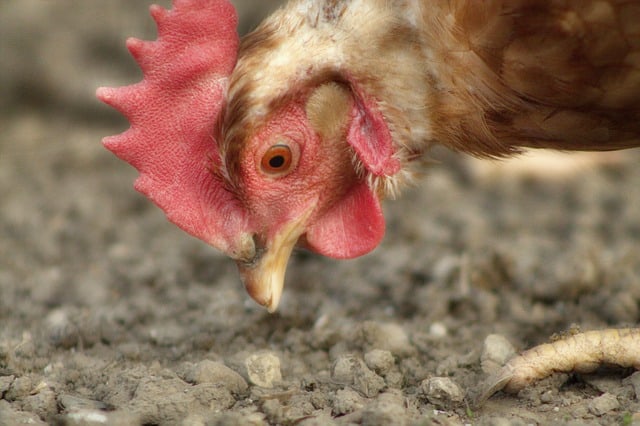
If you already have chickens, letting them peck around your beehives is a great way to keep small hive beetle larvae at bay.
Chickens are usually unaffected by bees but will enjoy pecking around and eating the larvae in the ground. They may also turn up the soil and expose the larvae to the sunlight, which can dry them out.
9. Nematodes
Nematodes are soil-dwelling organisms that can be released into the soil around your beehive. Since they are in the soil, they will not harm your bees. You can purchase nematodes online or from select farm and garden stores. Pour them onto the soil with a watering can.
The nematodes will burrow into the soil and seek out insects – like small hive beetle pupae. They will enter their bodies and release fatal bacteria, halting the reproduction of these irritating pests.
Just keep in mind that nematodes are only effective in certain types of soils and they do not overwinter well. They also aren’t as effective during times of drought.
10. Diatomaceous Earth
Ah, diatomaceous earth – the homesteader’s favorite remedy! This natural treatment can be used against small hive beetle larvae. It is the crushed-up skeletons of fossilized organisms. To use it, simply scatter some on the ground near your beehives in a radius of ten feet. After you have applied the dust, water so that it enters the soil.
11. Freeze Frames
If you detect hive beetles in your frames, consider removing the frames and placing them in the freezer. It will take at least four days in a deep freezer to totally kill the larvae.
12. Chemical Treatments
I don’t usually recommend using chemical treatments on a hive at all, as these can have dangerous side effects. There are some, however, that are recommended by numerous professional beekeeping organizations and are considered mostly safe to use.
– Coumaphos
One option is coumaphos. This is the leading treatment against small hive beetles and is sold under a variety of brand names, including CheckMite. It also works against varroa mites, if those are a problem for your beehive. You will use a single strip to target small hive beetles. Just keep in mind the following tips:
- You should remove honey supers for 42-45 days while applying coumaphos
- Coumaphos takes two weeks to fully dissipate
- Wear chemical-resistant clothing when handling these chemicals (not your leather bee gloves)
- Do not use more than twice in the same year
- Read all instructions that come with this application and do not use for off-label applications
– Permethrin
Permethrin is another common chemical treatment. As an extract from the chrysanthemum plant, many people like using it because they believe it is more natural.
It is still, however, a chemical, so use caution when applying it. It can be highly toxic to bees. Although it is recommended by numerous beekeeping organizations, it is still a toxic chemical that should only be used as a last resort. It is often used to repel mosquitoes but can also be used against hive beetles.
If you use permethrin, start by clearing surrounding vegetation. You’ll apply it to the soil, which will prevent the larvae from pupating on the soil beneath the boxes. If you already covered the area beneath your boxes with rocks, you shouldn’t need to resort to permethrin anyway. It is, however, another option.
When you use permethrin, just make sure you remove watering or feeding stations for your bees and carry out treatments after your bees are in for the night. It dissolves quickly and so it should not contaminate your bees as long as you are cautious about where and when you apply it.
Again, these insecticides should only be used as a last resort.
13. Wait for Winter
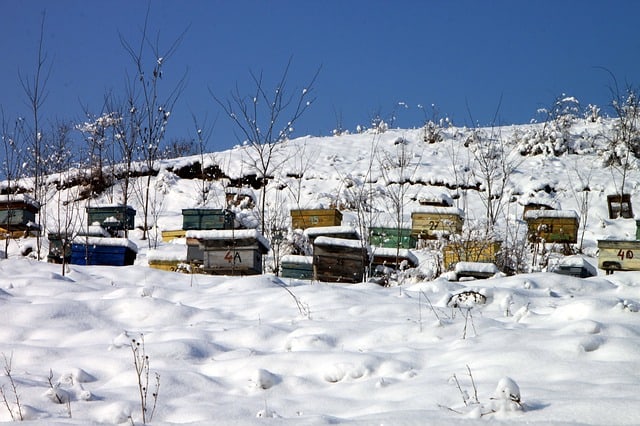
When all else fails, keep in mind that most hive beetles die off over the winter months. If you live in an area that experiences harsh winters, you can use the changing of the season to your advantage. Wait for winter to arrive, and your beetles should die off.
If your winters are extreme – or your hive infestation is advanced – this technique won’t work as well. You may have some adults survive to reproduce.
Keep an Eye on Your Hives
Hopefully, you now have a good idea of everything you need to do to get rid of hive beetles in your hives. If you’re new to beekeeping or a seasoned expert, these tips should help you recover (or possibly prevent!) any potential damage from these intrusive pests.
Remember, the stronger the hive, the more honey you will get – and the better beekeeper you will be.
